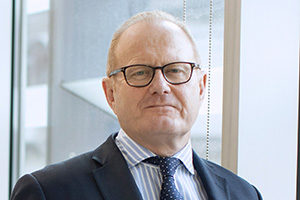
With clients seeking to preserve their own cash by delaying payments, or deferring projects, income for many law firms was down. With significant fixed costs of well-paid staff and expensive prime location rents, there was considerable overhead that could not easily be reduced. As many firms are thinly capitalised, the need for suitable sources of finance that have short term benefits, but do not constrain the firm in the long term was clear.
Of the myriad of finance options available, some key options are likely to be under active consideration by law firm leaders – working capital optimisation; bank overdraft facilities; internal funds (partner calls); and litigation finance for cases or portfolios. Each has benefits and costs, and some of these levers will be more familiar to management teams than others.
Managing Lock-Up is familiar to many law firm partners. Timely issuance of bills and chasing payments are established disciplines. The challenge today is that clients, who themselves are under liquidity pressures, are pushing back on paying bills already issued. On top of this, partners may also be reluctant to chase unpaid bills, let alone issue new ones, to avoid damaging relationships. Some firms may look to use a factoring company to provide immediate cash flow, but this may suggest the firm is distressed. Others may seek to delay payments to their own suppliers, but this risks reputational damage. A balance must be found to secure cash today without causing longer-term damage.
Firms will have established credit facilities with one or more lenders. Where good relationships exist, and covenants allow, it may be possible to seek an extension of agreed facilities in the short term. Whilst base rates have fallen, banks will apply risk-based pricing to any new facilities granted, which may mean costs are prohibitive. Firms will also need to consider the long-term impact of liabilities taken onto their balance sheets – debts will one day need to be repaid and such repayment will generally be guaranteed by the partnership. For many firms, bank facilities will be low down the list of preference but may be the default choice where limited knowledge of alternatives exists.
Often seen as a last resort, seeking funding from partners remains an option for many. For some firms, this may be in the form of delaying or reducing partner distributions. This will probably be unpalatable but is usually speedy to implement. Other firms may look to tap partners to inject further equity. This is likely to be particularly difficult in current circumstances due to the personal impact it will have on colleagues in both the short and long term. Partner finance is politically unpopular but is likely to be on the agenda of many management teams who have not yet explored other options.
A perhaps unfamiliar option, clients or the firm can take funding from a third party to cover legal bills and costs of either their clients or of the firm itself. Funding is generally structured so that it is non-recourse, meaning that it does not encumber the balance sheets of law firms or their clients. This method guarantees payments to firms in the short- term and may add a competitive edge in winning work today and for the future. There are few downsides for the law firm providing it ensures a reputable funder is introduced to its client or to its management board, to protect valuable relationships. Firms may seek to introduce such funding on a case-by-case basis or engage firm-wide on a portfolio of cases.
Law firm leaders are undoubtedly considering all the options available to them. Whilst familiar levers will initially rise to the top of the list, thought should be given to those that firms may yet to have fully engaged with. Litigation funding is likely to be one of these.
With funders in the UK having raised significant sums in recent years, support is likely to be available at both the speed and quantum that firms need to both shore up for today and ensure the firm is on a solid footing for tomorrow. When considering all the options for immediate cash needs, leaders should keep an eye on longer-term impact, in both financial and reputational terms.
…
For all questions regarding the topics raised in this blog, please contact Louis, Gian or member of our team of litigation funding experts.